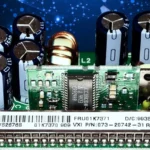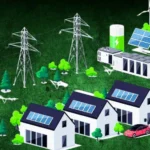Energy storage integration has become crucial to the global transition to sustainable energy systems. As renewable energy sources like solar and wind become increasingly prevalent, storing and managing energy efficiently is essential. This comprehensive exploration delves into energy storage integration, uncovering its significance, applications across various sectors, and its transformative potential for creating a more sustainable and reliable energy landscape.
The Significance of Energy Storage Integration
Energy storage integration represents a groundbreaking shift in generating, distributing, and consuming energy. It solves one of the key challenges of renewable energy sources: their intermittency. While renewables like solar and wind offer clean and abundant energy, their generation is variable and often does not align with energy demand. Energy storage addresses this mismatch by capturing excess energy when available and releasing it when needed.
Renewable Energy Optimization
One of the primary benefits of energy storage integration is optimizing renewable energy sources. Energy storage systems can store surplus electricity generated during periods of high renewable output and discharge it during periods of low generation. It enhances grid stability, reduces the need for backup fossil fuel power plants, and maximizes the utilization of clean energy.
Grid Resilience
Energy storage integration plays a crucial role in enhancing grid resilience. By providing fast-response capabilities, such as frequency regulation and voltage support, energy storage systems help maintain grid stability in the face of fluctuations and disruptions. They buffer against power outages, ensuring a reliable electricity supply, especially during extreme weather events or disasters.
Decentralized Energy Systems
Energy storage integration facilitates the transition to decentralized energy systems. By enabling distributed energy resources like rooftop solar panels and home battery systems, it empowers consumers to generate, store, and manage their energy. This decentralization reduces strain on centralized power grids and fosters energy independence.
Techniques in Energy Storage Integration
Energy storage integration encompasses a variety of techniques and technologies to store and manage electricity efficiently.
Battery Energy Storage
Battery energy storage systems (BESS) are a prominent technology in energy storage integration. They use rechargeable batteries to store excess electricity and discharge it when needed. Lithium-ion batteries have become widely adopted for their high energy density and rapid response capabilities.
Pumped Hydro Storage
Pumped hydro storage is a well-established form of energy storage. It involves using excess electricity to pump water uphill to a reservoir during periods of low demand. The stored water is released downhill through turbines to generate power when electricity is needed. Pumped hydro storage systems are known for their large-scale capacity and long-term storage capabilities.
Thermal Energy Storage
Thermal energy storage systems store heat or cold and release it for heating, cooling, or power generation. These systems can use molten salt or phase-change materials to store thermal energy. They are often used with solar thermal power plants and HVAC systems for buildings.
Applications of Energy Storage Integration
Energy storage integration finds applications across diverse sectors, each benefiting from improved grid stability, energy reliability, and sustainability.
Renewable Energy Grid Integration
Energy storage integration is essential for integrating high levels of renewable energy into the grid. It ensures a smooth transition from fossil fuels to clean energy sources by mitigating the intermittency of wind and solar power. Grid operators use energy storage to balance supply and demand, reduce curtailment, and enhance grid reliability.
Electric Vehicles (EVs)
Electric vehicle adoption is rising, and energy storage integration is vital in supporting EV charging infrastructure. Battery storage systems at charging stations provide fast charging capabilities and help manage peak demand, reducing stress on the grid.
Residential and Commercial
Residential and commercial energy storage solutions empower consumers to take control of their energy usage. Home battery systems allow homeowners to store excess solar energy during the evening or power outages. These systems contribute to energy independence and lower electricity bills.
Challenges and Ethical Considerations
While energy storage integration offers significant benefits, it also presents challenges and ethical considerations.
Environmental Impact
The production and disposal of energy storage technologies, particularly batteries, have environmental impacts. Ethical considerations include responsible recycling and disposal practices to minimize harm to the environment and communities where these technologies are manufactured or retired.
Resource Availability
The widespread adoption of energy storage technologies relies on the availability of critical materials like lithium and cobalt. Ethical considerations include responsible sourcing of these materials to prevent exploitation and conflicts in mining regions.
Access and Equity
Ensuring equitable access to the benefits of energy storage integration is essential. Ethical considerations involve addressing disparities in access to clean energy technologies and ensuring that underserved communities can participate in and benefit from the transition to sustainable energy systems.
The Future of Energy Storage Integration
Energy storage integration is poised to play an even more substantial role in shaping the future of global energy systems, fostering sustainability, reliability, and energy independence.
Advanced Battery Technologies
Advancements in battery technologies will continue to drive progress in energy storage integration. Research and development efforts aim to improve energy density, cycle life, and safety, making batteries more efficient and cost-effective.
Grid Modernization
Grid modernization efforts will facilitate the integration of energy storage systems into existing infrastructure. Smart grid technologies, advanced sensors, and real-time data analytics will optimize grid operations and enhance the responsiveness of energy storage.
Energy Access
Energy storage integration can expand access to electricity in underserved regions. Off-grid and microgrid solutions, powered by renewable energy and energy storage, can provide reliable electricity to remote and off-grid communities, contributing to economic development and improved quality of life.
Conclusion
Energy storage integration is not just about storing electricity; it transforms how we generate, distribute, and consume energy. Its significance lies in its capacity to enhance grid reliability, accelerate renewable energy adoption, and promote energy independence. As energy storage integration evolves, ethical considerations, sustainability, and equitable access must guide development and implementation.
The future it envisions is one where energy is reliable, sustainable, and accessible to all, where communities have the power to control their energy destiny, and where the planet benefits from reduced greenhouse gas emissions. Energy storage integration is the key to unlocking new energy reliability and sustainability possibilities—one stored electron at a time. With energy storage integration, we can create a future where energy is a force for good, powering progress and prosperity for all.












